The debate about the origins of the “Aryans” and their arrival in India has flared up again, this time triggered by new genetic findings that appear to confirm beyond any reasonable doubt that large numbers of Indo-Europeans herders migrated into the Indian subcontinent about 4000 or so years ago. Razib Khan (one of the best informed and unbiased bloggers on this topic) has written in detail about 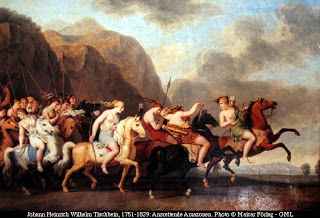 this topic in several posts, the most recent of which is here. I am not going to go into the genetics or the details, I just wanted to recap the story in very simple layperson outline and focus mostly on some of the politics around this topic. My basic argument is that the Hindutvadi reaction to the political uses of “Aryan Invasion Theory” is relatively justified, but opting to take a stand against population genetics and common sense in the form of a relatively recently concocted (and very unlikely) “Out of India” (OIT) theory is an unfortunate and self-defeating mistake.
this topic in several posts, the most recent of which is here. I am not going to go into the genetics or the details, I just wanted to recap the story in very simple layperson outline and focus mostly on some of the politics around this topic. My basic argument is that the Hindutvadi reaction to the political uses of “Aryan Invasion Theory” is relatively justified, but opting to take a stand against population genetics and common sense in the form of a relatively recently concocted (and very unlikely) “Out of India” (OIT) theory is an unfortunate and self-defeating mistake.
The Indo-Europeans who migrated into India were one of several migratory stream that, between 4000-2000 BCE, spread in all directions out of the Pontic Steppe (what is now Eastern Ukraine and Southern Russia, North and North-East of the Black Sea). They were cattle herding, horse breeding steppe dwellers who, like practically all other human populations, were themselves a product of the layers of human settlement and migration that have woven the intricate net of human racial groups since the first emergence of modern humans in Africa. They were also a very successful, capable and warlike people who had developed light, fast, spoke-wheeled chariots (and possibly, the composite bow) that were the wonder weapon of their time.
Their eruptions may have been triggered by climate change, but their extraordinary expansion would not 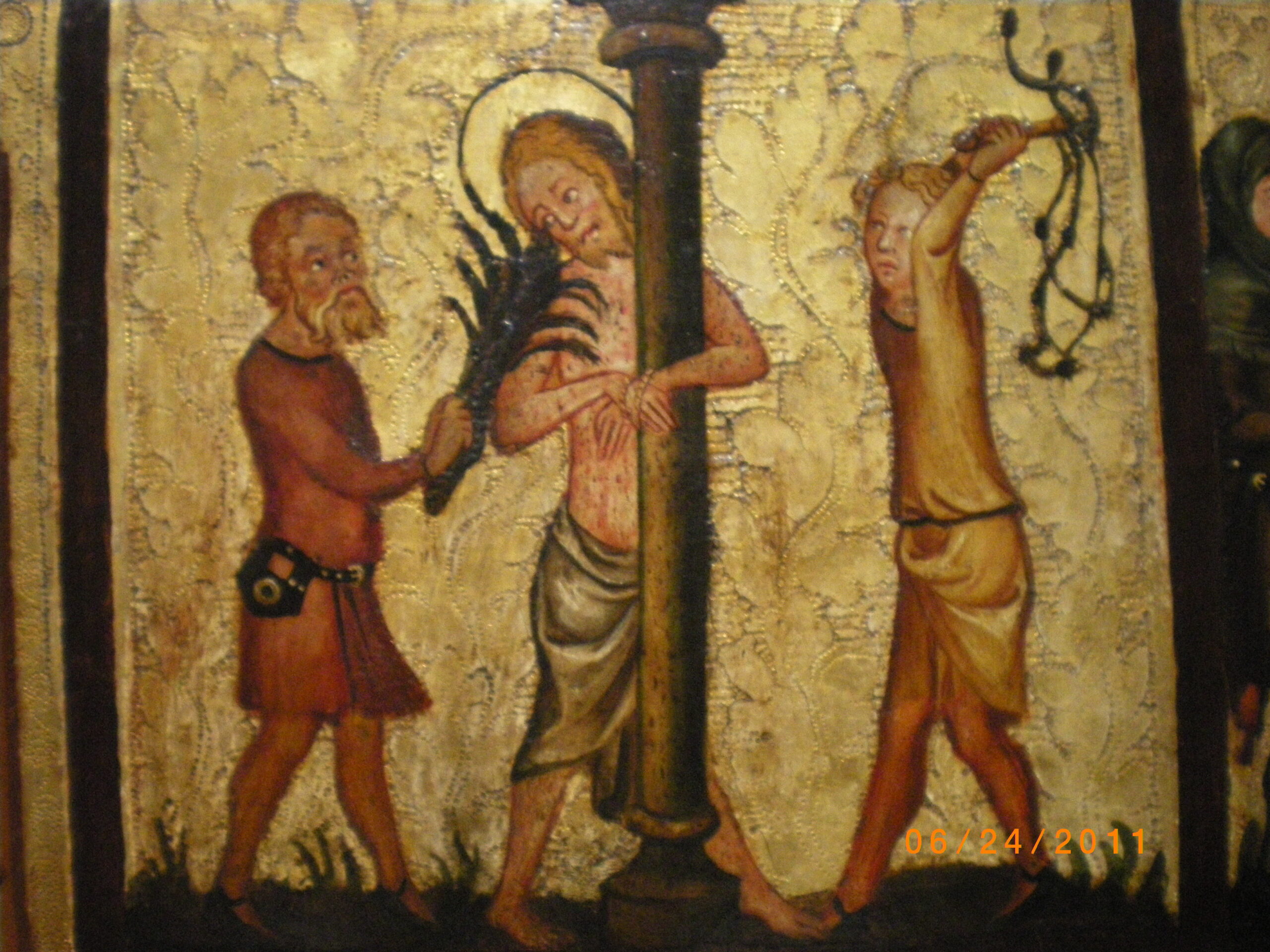 have been possible without their skill in the art and science of horse breeding, the development of war chariots, exceptional skill with the bow and arrow (whether the bows were composite bows or just high quality simple bows is still an open question) and whatever soft-power aspects contribute to asabiya and victory in war.
have been possible without their skill in the art and science of horse breeding, the development of war chariots, exceptional skill with the bow and arrow (whether the bows were composite bows or just high quality simple bows is still an open question) and whatever soft-power aspects contribute to asabiya and victory in war.
Those steppe warriors who headed westwards conquered and assimilated everyone in their path until they reached the very western edge of Europe in Ireland and Spain and became the dominant strand in the genetic, linguistic and cultural heritage of Europe. As expected for migrating people in a violent age, their genetic input was male-biased (i.e. in many cases the mothers of future generations belonged to the previous local populations, the males came from outside). All this happened 4-5000 years ago, and 4-5000 years is a long time; in this time these people and their languages and culture have evolved into distinctive European and sub-European populations, languages and cultures and we do not regard any of these languages or peoples as being “foreigners” to Europe in any meaningful sense. They are European and have been for thousands of years. The point here is that as they moved in, they merged with older populations and evolved and changed in myriad ways, not just culturally, but also genetically (e.g. the fixation of genes for light skin happened after arrival in Europe). The same thing must have happened elsewhere, though with local differences in the relative contributions of migrant and pre-existing genes and cultural memes. Whatever the details, the new populations that emerge in any particular settled region are now the ones “indigenous” to that region, and they are no longer the same as any of the parent populations who contributed genes and cultural memes to this population. I mention all this for reasons that are obvious (or will become obvious).
Anyway, soon after some of these steppe dwellers started moving West, other steppe tribes headed south and southeast and split into Iranian and Indian branches. After possibly picking up genes and cultural memes from Central Asia (including the Bactria-Margiana Archeological complex), those tribes who migrated into India were there in strength by 1500 BCE. They brought with them a distinctive economic and cultural package built around the herding of cattle, the domestication of the horse, the use of war chariots, skilled archery, the high status of warriors and the veneration of certain Gods whose cognates can be found in multiple Indo-European societies as far apart as Lithuania, Greece and Iran.
These Indo-Europeans must have brought their Indo-European language with them. Sometime after they first got here, the dominant people of Northwest India (whether Indo-European or mixed in racial terms) had developed Vedic Sanskrit, an Ind0-European language, but one that can be described as an Indian language, just as French is an Indo-European language, but is unambiguously a language of France, not of Eastern Ukraine. Wendy Doniger (a writer given to flippancy and a fondness for 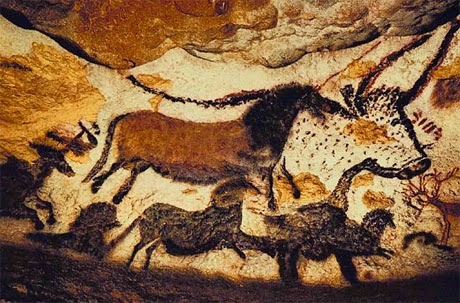 contrarian theories) suggests that Sanskrit may never have been an everyday language of anyone in the Vedic era; it may have been a specifically priestly language, derived from the everyday vernacular prakrits instead of the other way round (IIRC, she imagines a Brahmin going home and having to speak a Prakrit to his non-Sanskrit-speaking wife); but given that there are plays, long epic poems and public inscriptions written in Sanskrit, it is likely that it was much more than that, at least in the Vedic era. In any case, I am not qualified to comment further on this. One of our fellow Brownpundits has written more about this topic and may have specific comments.
contrarian theories) suggests that Sanskrit may never have been an everyday language of anyone in the Vedic era; it may have been a specifically priestly language, derived from the everyday vernacular prakrits instead of the other way round (IIRC, she imagines a Brahmin going home and having to speak a Prakrit to his non-Sanskrit-speaking wife); but given that there are plays, long epic poems and public inscriptions written in Sanskrit, it is likely that it was much more than that, at least in the Vedic era. In any case, I am not qualified to comment further on this. One of our fellow Brownpundits has written more about this topic and may have specific comments.
Whatever the cultural and linguistic details, genetically speaking the Indo-Europeans and their descendants merged with older populations in India while spreading throughout the subcontinent, from what is now Afghanistan all the way to Bengal in the East and the very southern tip of India in the South. Of course, India has been inhabited by multiple groups of humans ever since the first arrivals from Africa migrated through what is now Arabia and entered the Indian subcontinent 50, 000 years ago. The most recent migrants prior to the arrival of the Indo-Europeans, were probably farmers from West Asia, who seem to have made up a large component of the genetic makeup of the people of the Indus-Saraswati civilization. The Indo-Europeans merged with these earlier populations and these various genetic strands then merged into a distinctive Indian genetic complex, easily distinguishable from other major population groups, even as it displays (like all large populations, but even more pronounced in India because of a strong tradition of caste/Jati based endogamy in the last 2000 years) a good deal of internal structure. Thus a population geneticist can easily identify individuals as “South Asian” using a limited set of genetic markers, even as these South Asians can be further differentiated by zooming in on various regions, castes and clans. There is much more to say on this topic, but I will leave it to experts like Dienekes and Razib Khan and others. Check them out to learn more.
This overview of the arrival of Indo-Europeans in the Indian subcontinent is supported by so much good DNA evidence that educated outsiders have no difficulty agreeing with this narrative, and are frequently surprised to learn that things are not so simple within India. In India the topic is radioactive and there now exists a very vocal Right wing Hindu nationalist narrative (let us call it the Hindutvadi narrative) that rejects all or part of this view of ancient Indian population history on ideological grounds. Less appreciated is the fact that there are also Indian Leftist and regionalist groups that accept the Indo-European arrival story, but that present it in a way that emphasizes certain 19th century stylized facts (“Aryans vs Dravidians”) and can be ill-informed in its own way (see below).
While some Hindutvadis limit themselves to rejecting what they perceive (with some justification) as anti-Hindu ideological bias in Western and Leftist-Indian narratives, one vocal section simply rejects that any Indo-European migration into India ever occurred. These writers have turned the story on its head, positing India as the “original/primordial” home of the Indo-Europeans and proposing an “Out of India” (OIT) theory instead of the “Aryan Migration Theory” (though I personally think it is good to give up the word Aryan in this context). This is a relatively recent development within the Hindutvadi universe, as many of the early Hindutvadis (perhaps because European racism ranked “Aryans” so highly) had no problem with “Aryan Invasion Theory” (AIT) and even speculated that their “original home” was as far away as the Arctic! But this has changed dramatically in the last 20-30 years (aided by the conversion of a few prominent Europid Hindutvadis to this cause) and OIT is now vigorously defended, or at least kept as an open option, in Hindu nationalist circles (though those willing to question it do exist)
I would add that (contrary to some anti-Hindutvadi propaganda) this Hindutvadi position is not necessarily about genetics or race in the usual Western context (i.e., unlike, say, the Nazis, most of them are not focused on extreme racial purity) but seems to have become popular mostly as a defense against 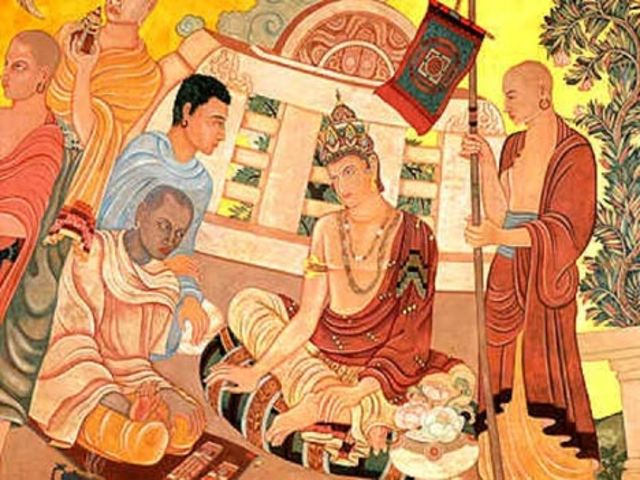 what they perceive as the use of AMT as a tool in domestic Indian political and ideological debates by their death-match opponents, the leftists, liberals and regional separatists of India. To understand this, we have to go back to the origins of the Aryan invasion theory itself. Highly stylized accounts of the migration of Indo-Europeans (then usually described as “Aryans”) were initially developed in the 19th century by European scholars, working within Western (Monotheist, Post-Enlightenment, Marxist and now post-Marxist) models and tinged with the conscious as well as unconscious racist and supremacist politics of the age. Various colonial administrators and lower-level scholars who put this scholarship to work in the public sphere were also concerned with specifically colonial priorities regarding “divide and rule” within India (most explicitly, in the need to pit Southern “Dravidians” against North Indians). Influenced partly by the unconscious biases of the age as well as the requirements of colonial administration, these early accounts described an invasion (or invasions) in which fair-skinned “Aryan” warriors from the steppe conquered India and imposed their Indo-European religion and language upon the darker-skinned “indigenous” Indian population (the so-called Dravidians). Even as our understanding of history and population genetics has become more nuanced, this stylized colonial narrative (for and against) has continued to dominate popular discourse inside India. Of course, the moral valence assigned to these groups has shifted with changing fashions; while those early accounts sometimes regard the Aryans as genetically superior European ubermenschen, who naturally came to rule over the darker nations; now that academic fashions have changed, most liberal or leftist writers tend to reverse this valuation. Now the Aryans are the racist, oppressive, colonizing villains of the piece, with the Dravidians cast as “indigenous”, oppressed, colonized (and hence, virtuous) actors in a morality play reminiscent of the European conquest of the Americas. In this schema, the Vedas were presented as almost entirely the product of these “invaders”, imposed on an unwilling “indigenous” population along with a caste-system that privileged these foreign conquerors and oppressed and marginalized the “original” inhabitants of India. In either version, the Aryans gradually pushed the darker “Dravidians” down into the South of India, where their languages survived, but they were still dominated by “Aryan” Brahmins and their (foreign), aggressive, casteist and supremacist religion.
what they perceive as the use of AMT as a tool in domestic Indian political and ideological debates by their death-match opponents, the leftists, liberals and regional separatists of India. To understand this, we have to go back to the origins of the Aryan invasion theory itself. Highly stylized accounts of the migration of Indo-Europeans (then usually described as “Aryans”) were initially developed in the 19th century by European scholars, working within Western (Monotheist, Post-Enlightenment, Marxist and now post-Marxist) models and tinged with the conscious as well as unconscious racist and supremacist politics of the age. Various colonial administrators and lower-level scholars who put this scholarship to work in the public sphere were also concerned with specifically colonial priorities regarding “divide and rule” within India (most explicitly, in the need to pit Southern “Dravidians” against North Indians). Influenced partly by the unconscious biases of the age as well as the requirements of colonial administration, these early accounts described an invasion (or invasions) in which fair-skinned “Aryan” warriors from the steppe conquered India and imposed their Indo-European religion and language upon the darker-skinned “indigenous” Indian population (the so-called Dravidians). Even as our understanding of history and population genetics has become more nuanced, this stylized colonial narrative (for and against) has continued to dominate popular discourse inside India. Of course, the moral valence assigned to these groups has shifted with changing fashions; while those early accounts sometimes regard the Aryans as genetically superior European ubermenschen, who naturally came to rule over the darker nations; now that academic fashions have changed, most liberal or leftist writers tend to reverse this valuation. Now the Aryans are the racist, oppressive, colonizing villains of the piece, with the Dravidians cast as “indigenous”, oppressed, colonized (and hence, virtuous) actors in a morality play reminiscent of the European conquest of the Americas. In this schema, the Vedas were presented as almost entirely the product of these “invaders”, imposed on an unwilling “indigenous” population along with a caste-system that privileged these foreign conquerors and oppressed and marginalized the “original” inhabitants of India. In either version, the Aryans gradually pushed the darker “Dravidians” down into the South of India, where their languages survived, but they were still dominated by “Aryan” Brahmins and their (foreign), aggressive, casteist and supremacist religion.
Meanwhile in more scholarly literature, the “Aryan invasion theory (AIT) has been replaced by an “Aryan migration theory” (AMT) that stresses the migration of various Indo-European tribes, de-emphasizing any conquering and pillaging they may have done along the way. But elements of the “Aryan invader, Dravidian victim” narrative remain deeply embedded in textbooks, popular histories and the popular imagination. Whether invaders or migrants, the Aryans can still be seen as foreigners, the Dravidians as indigenous and “original” inhabitants of India, still separated and oppressed (never mind that the population of the Indus-Saraswati civilization was most likely itself the product of West Asian migrations into India; or that ancestral South Indian (ASI) genetic haplotypes are now found in all North Indian populations, and Ancestral North Indian (ANI) Haplotypes in all Southern ones, though a rough North-South gradient exists). There is also a tendency to regard all or part (the elite part) of Hinduism as “Brahminism”, the religion of the oppressors and the elite, characterized above everything else by an oppressive caste system. It is also sometimes suggested by Leftist-Indian as well as foreign writers that Hinduism is really not a religion at all; “Hindu” being a unitary name imposed by foreigners on the variegated and heterogeneous religious traditions of India. The implication here is that “Hindu Nationalists” are mistaken not just about details, or in their fondness for “fascism”, but in the very nature of the category they claim to represent. If “Hindu” is a false category, then how is Hindutva even possible? In short, even as the scholarly consensus has shifted from Aryan invasion to Aryan migration, the moral lessons drawn by the Left and by liberal writers (local as well as foreign) from these historical events continue to be tinged with specific political themes, themes that are anathema to what is called the Hindu Right.
Of course, the popularity of these themes is not surprising because:
It is fits well with currently popular Western leftist memes such as “India=caste-system” and “silenced/marginalized indigenous people versus colonizers/racists/invaders”. Leftist writers are also attracted to the “Hinduism=Brahminism” and “Good black people oppressed by violent/evil White people” themes that they think should be read into the history of ancient India. Now the fact is, all of these memes may have some truth to them, and similar frames are applied to the history of other countries as well by leftists and postmodern liberals. But what is unusual about India is that the mainstream of English language academic, journalistic and popular history writing about India is (or was, until very recently) dominated by these progressive frames; in most other countries a standard “textbook” nationalistic mythology that stresses common origin and downplays, expiates or ignores unpleasant past practices tends to dominate the center; with progressive framing that questions the very basis of nationhood, religion or other community-wide myths being somewhat marginal, or at least, being delayed until the postgraduate or elite discourse level.
This view (Aryan outsiders, Dravidian locals, oppression by Northern Brahmin elites) also appeals to Southern Indian politicians (whether Leftist or not) who have built their own politics on “Dravidian” identity and “resistance to Northern/Brahminical/Aryan domination”. No surprise there.
I personally think the population history story is supported by so much science that it is foolish to deny it just because your political opponents can frame these events to suit their contemporary politics. Humans first came to India 50,000+ years ago from Africa and new streams of migrants and conquerors have continues to enter this land ever since. As they settle here, they too become part of the vast population of India, one of the great centers of human settlement and civilization since the first human beings left Africa. The subsequent history of India (like that of other centers of civilization) can be interpreted in many different ways, from “all of history is the history of class struggle” to “one land, one folk, one leader, one law”… and everything in between. These interpretations are going to be the subject of endless argument and which one you prefer turns on your view of human nature, human society, human history and human politics. But whatever narrative you prefer, it is unwise to base it on the denial of verifiable scientific facts. In this sense, it is unfortunate that the Hindu Right has chosen to die on this hill. They can argue against the 19th century framing of Indian history, the rejection of Hinduism, or the rejection of the civilizational unity of India, without inventing fantastic “out of India” theories that will require endless epicycles to explain away the emerging flood of genetic evidence against it. And like the Ptolemiac system, the OIT theory too will eventually die out because a much more economical (and true) explanation exists. The Indo-Europeans came to India from the Steppes. Accept this, move on from here. Having said that, I do not doubt that those people who have already staked out public positions in support of OIT will not be swayed by someone like me. Someone who is himself a Hindu and is a hardcore supporter of Hindutvadi positions, but is also a scientist with real understanding of the genetic evidence may have a better chance (at least one such person exists, and his post on this topic can be seen here), but even he will not convince those who have publicly staked their reputations on OIT. As Planck said in a different context about physicis, some people will hold on to their beliefs till the day they die and then the outdated theory will die with them. New people will grow up who will see no need to stick to older theories that do not match the data. If this fact (that many of the older scientists will never change their minds) is true of physics, which so explicitly idealizes the ability to change in the face of new evidence, then imagine how much more difficult it will be to change minds in the softer fields.
If it is any consolation to Hindutvadi friends, I believe it is very much possible to construct a plausible narrative that does describe Hinduism (or Dharma) as the religion of the vast majority of Indians, widely accepted by them and owned by them as their own by some point in the distant past (at least 2000 years ago). And that even in Vedic times, Hinduism was not some sort of foreign imposition, it was an “Indian” product, with Indo-European as well as other roots. And while it may be a religion very varied in its 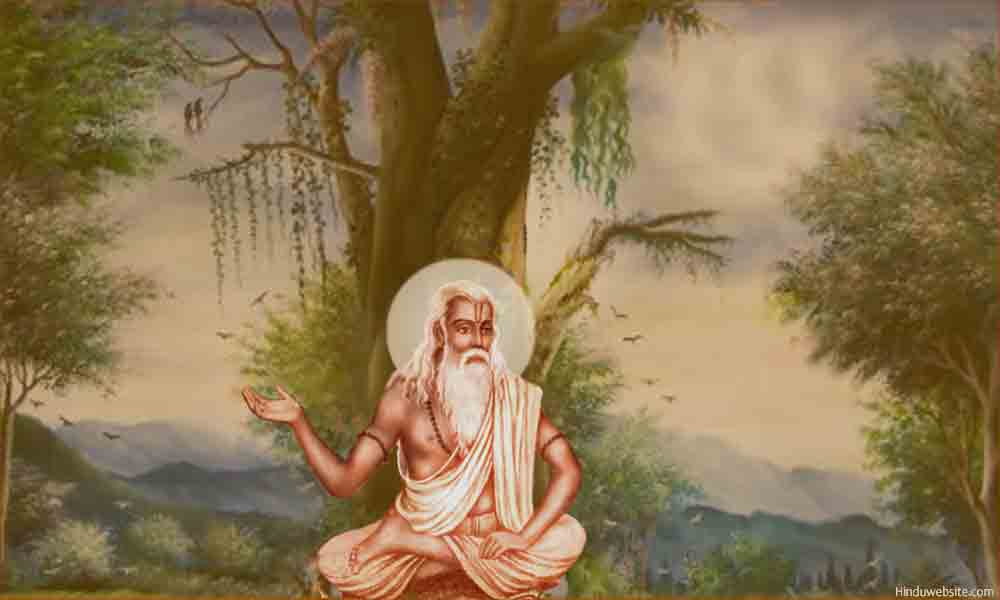 practices, beliefs and symbols, in this it is no different from other pagan religious systems. With all its variety, it still has a recognizable inner unity, with several common sacred texts, symbols and beliefs. Just as Greeks identified with Greek religion, Romans with Roman religion and Japanese with Japanese religion, even when those religions did not resemble the centralized, heirarchical dogmas of the Abrahamic religions, Indians identified with an Indian religion, even as its features and boundaries remained very elastic. That many of its ancient beliefs and practices are not in sync with modern liberal ideals is true, but that too is hardly unique. It is true of all past religious and cultural packages (and you do not need to go back 3000 years to find beliefs and practices that shock us today).. Much that was normal in American or Chinese culture a 100 years ago is unacceptable today. That does not stop Americans or Chinese from owning and even taking pride in their ancestral culture. The same can happen in India, but not if it based purely on fantasies. The fantasy to reality ratio has to remain in manageable range.
practices, beliefs and symbols, in this it is no different from other pagan religious systems. With all its variety, it still has a recognizable inner unity, with several common sacred texts, symbols and beliefs. Just as Greeks identified with Greek religion, Romans with Roman religion and Japanese with Japanese religion, even when those religions did not resemble the centralized, heirarchical dogmas of the Abrahamic religions, Indians identified with an Indian religion, even as its features and boundaries remained very elastic. That many of its ancient beliefs and practices are not in sync with modern liberal ideals is true, but that too is hardly unique. It is true of all past religious and cultural packages (and you do not need to go back 3000 years to find beliefs and practices that shock us today).. Much that was normal in American or Chinese culture a 100 years ago is unacceptable today. That does not stop Americans or Chinese from owning and even taking pride in their ancestral culture. The same can happen in India, but not if it based purely on fantasies. The fantasy to reality ratio has to remain in manageable range.
To the extent that modern liberal ideals are genuinely attractive or powerful (and I believe some of them definitely are; e.g legal equality as an ideal is here to stay; whatever its past beliefs and practices, no culture denies it in principle today). All the talk of the end of the liberal moment notwithstanding, I think even participatory democracy as an ideal is not going to go away easily. All over the world various religions have evolved and modified their beliefs and practices to fit with the more powerful and attractive of modern ideals and Hinduism has done, is doing, and will do, the same. Its proponents will take a stand on some points and concede on others; OIT is just one of the things they will concede on.
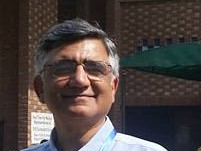 Courtesy: Brown Pundits
Courtesy: Brown Pundits



